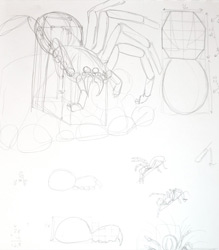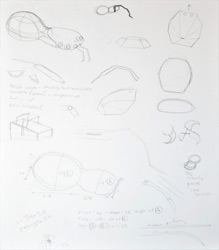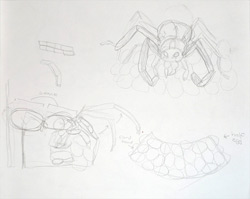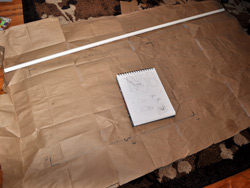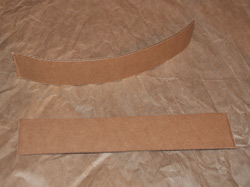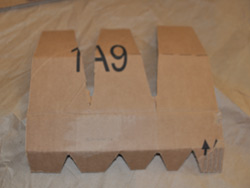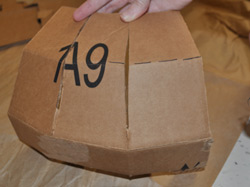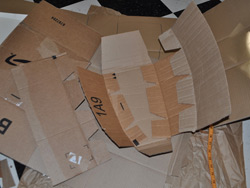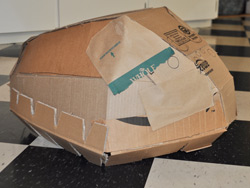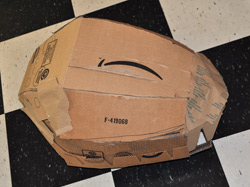Planning
This year, I want to turn my garage into the lair of a gigantic tarantula. Huge egg sacks and webbing will hang from the walls, and the giant spider will menace our trick-or-treaters with thrashing legs and gnashing fangs. I will be operating it from the inside.
This project is more complicated than any I've attempted before. I began by brainstorming to figure out what I could do and what materials I could use while staying in my budget. Then I looked a lot of tarantulas. Spider legs are quite complex and have a lot of segments; fortunately, the legs that I want to animate (the foremost legs and the palpus, or feelers) generally just contract and relax like a finger, so I studied how fingers move. I am not attempting to make an entirely accurate tarantula, as some exaggeration, especially in the size of the eyes, will enhance the effect.
Cardboard
I learned last year how flexible cardboard can be as a medium. In order to make the frame for my spider's body, I am creating a cardboard framework. To begin, I lay out a full-size piece of paper so I could begin experimenting with different body proportions. Then I began to condition the cardboard - depending on what I want, I can have a straight line, a curve, or something in-between.
By bending and cutting out varying sizes of triangles, you can turn a flat piece of cardboard into a complex shape. To bend on a straight line, a hard flat surface (like a small shelf) is useful.
I began to put together the cephalothorax, or head and chest. This is shaped somewhat like an egg cut lengthwise. I try to use two identical pieces of a box, and to measure carefully, as I want it to be as symmetrical as possible. I attach the cardboard with hot glue, which soaks into the cardboard and binds it together quickly and with strength. As I build it up, I also add some bracing cardboard for stability.
